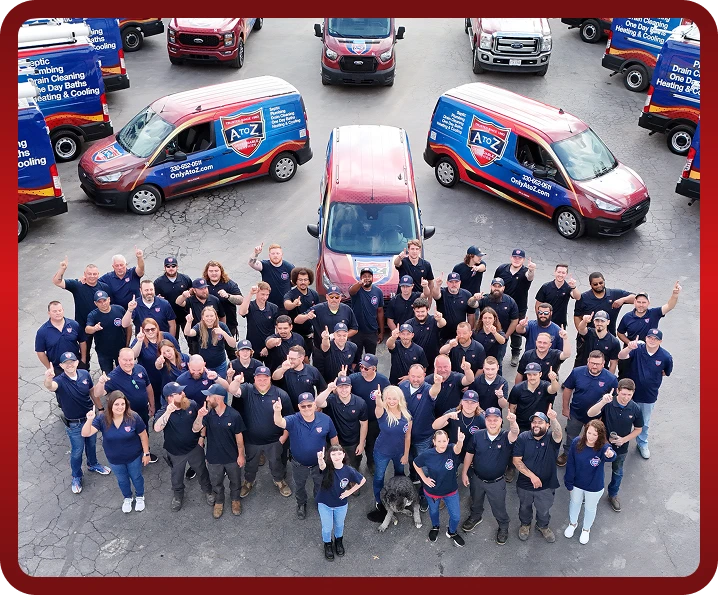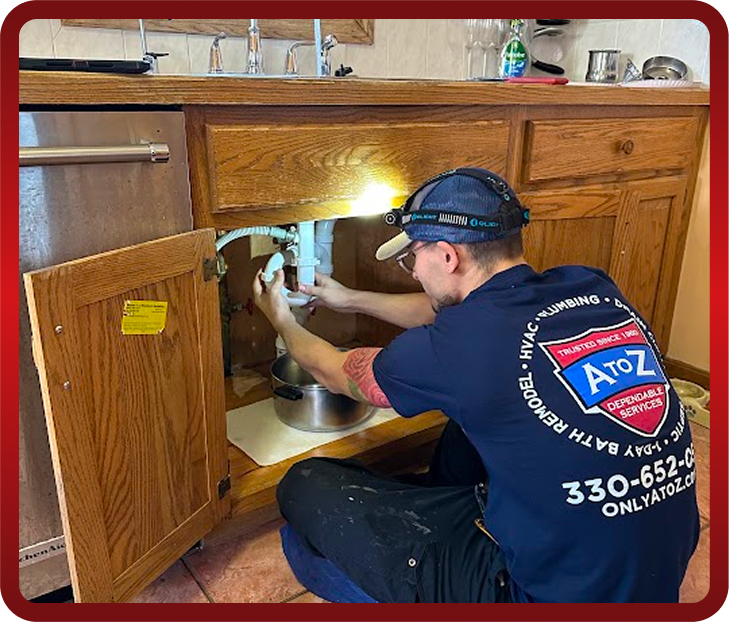What you get from A to Z Dependable Services:
We Are Trusted By Many Homeowners
Keeping Your Family Comfortable SINCE 1960


We offer a wide range of plumbing repair services, including leak detection and repair, drain cleaning, faucet and fixture installation and replacement, sump pump installation and maintenance, pipe repair and replacement, sewer line inspection and repair, water heater installation, gas line installation and much more.
The amount of time needed for each job depends on the type of service required. Some simple repairs may only take an hour or two while more complex jobs can take multiple days to complete depending on the extent of the work required.
Some signs that you may have a plumbing problem include water stains on the ceiling, puddles of water around the base of toilets or sinks, strange noises coming from pipes, slow draining pipes, and foul smells coming from drains. If you notice any of these signs, contact a professional plumber as soon as possible for an inspection.
If you are a homeowner in the Mahoning Valley area, you know how important your plumbing is to your household ecosystem. We rely on our showers, kitchen sinks, dishwashers, showers, water heaters, and more to help aid us through our day-to-day life. Unfortunately, plumbing appliances and systems will inevitably run into issues due to wear and tear, age, and other factors. That is why A to Z Dependable Services is here to help serve you with premiere plumbing repair services. Whatever plumbing repairs you may need, our plumbing experts are here to provide you with effective solutions. We offer a full range of plumbing repair services. Call A to Z Dependable Services for more information on all of the Plumbing Repair Services we offer and let us help you with whatever plumbing needs your home may require!
There are several signs to keep an eye out for that indicate that your home probably needs plumbing repairs, including:
Slow drains are never a good sign and usually indicate some sort of a clog within your plumbing pipes. The easiest solution is to call the experts at A to Z Dependable Services for all your Professional Expert Plumbing Repair needs. Our certified plumbers can accurately diagnose and repair any plumbing appliance in your home. To set up a Professional Expert Plumbing Repair appointment, call (330) 525-8623 today!
Water is a reliable asset in any Mahoning Valley home. Experiencing low water pressure can cause serious frustration for many homeowners. Low water pressure is a premature indication that you likely have a clogged drain or other plumbing issue. Make sure you contact the experts at A to Z Dependable Services to set up a Professional Expert Plumbing Repair appointment today!
There are many reasons that you have lost hot water. But generally speaking, you are likely experiencing an issue with your home’s water heater system. In any event, call the pros at A to Z Dependable Services for help servicing your plumbing system.

Copyright © 2025 A to Z Dependable Services. All Rights Reserved. Privacy Policy. ADA Notice.
At A to Z Dependable Services, we are committed to ensuring that individuals with disabilities enjoy full access to our websites. In recognition of this commitment, we are in the process of making modifications to increase the accessibility and usability of this website, using the relevant portions of the Web Content Accessibility Guidelines 2.0 (WCAG 2.0) as our standard. Please be aware that our efforts are ongoing. If at any time you have difficulty using this website or with a particular web page or function on this site, please contact us by phone at (330) 525-8623; or email us at ([email protected]) and place “Web Content Accessibility (ADA)” in the subject heading and we will make all reasonable efforts to assist you.